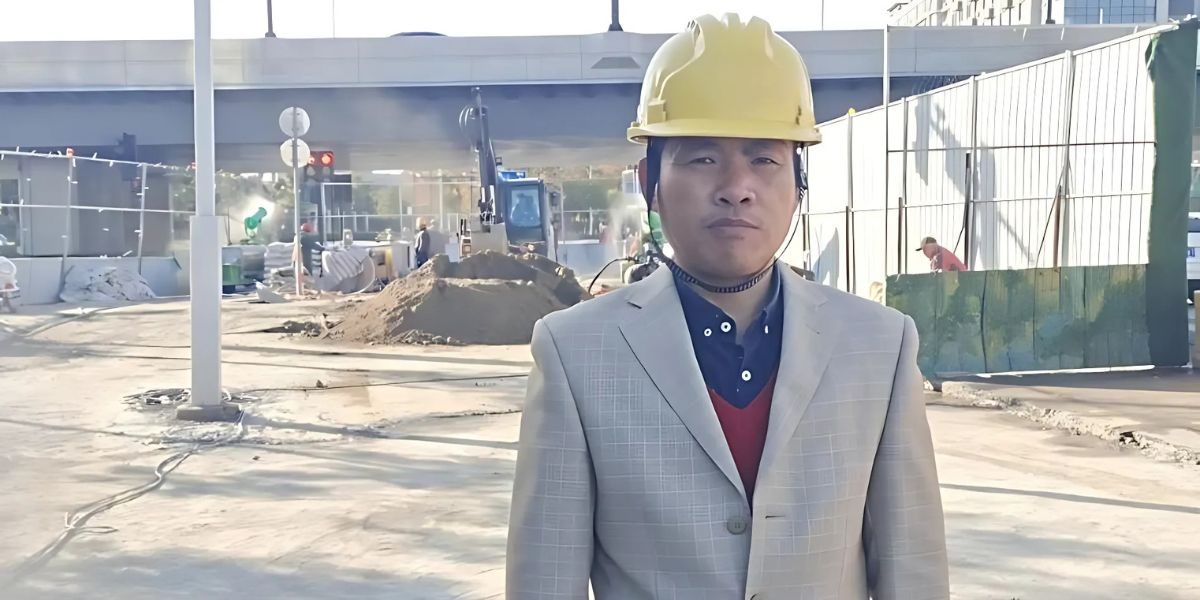In the field of construction materials and sustainable development, the industry has long faced significant challenges, including the high resource consumption of traditional concrete and the difficulties associated with managing construction waste. Research suggests that billions of tons of concrete waste are generated annually due to demolition and construction activities. This waste not only occupies vast land areas but also contributes to environmental pollution.
Feng Li, an expert in construction and concrete research, focuses on the recycling and resource utilization of recycled concrete aggregates (RCA). As a special expert of the Green Building Association, he has played a key role in the preparation of the “Technical Application of Prefabricated Building Throughout the Process — Design·Production·Construction.” He is now working to enhance the performance of concrete through recycled aggregate processes, supporting efforts to create a “design-construction-deconstruction-regeneration” closed-loop system in construction and contributing to the low-carbon transformation of the construction industry.
In his research titled Recycling and Performance Evaluation of Recycled Concrete in Construction Engineering, Feng Li explores the potential applications of recycled concrete (RCA). By collecting and processing waste concrete, he prepares recycled concrete aggregates (RCA) and conducts systematic evaluations of its physical, mechanical, and durability properties. The study indicates that while the density and porosity of recycled concrete are somewhat higher than those of traditional concrete, its properties generally meet construction material standards. The compressive and flexural strengths of recycled concrete reach approximately 80-90% of those of traditional concrete, making it suitable for non-structural applications. In terms of durability, its resistance to chloride ion penetration and freeze-thaw performance may even exceed traditional concrete, suggesting potential benefits for construction projects in harsh environments such as coastal or cold regions.
In the field of mass concrete construction technology, temperature stresses and cracking caused by cement hydration heat have long been recognized as major challenges in the construction industry. In large concrete structures, such as dams and large building foundations, a significant amount of heat is released during the cement hydration process, leading to a sharp increase in internal concrete temperature. The subsequent cooling and shrinkage can contribute to temperature stresses, potentially causing cracks. These cracks may not only affect the appearance of the structure but also could weaken its load-bearing capacity and durability, and in severe cases, pose risks to the safety of the entire project.
In the research Temperature Control and Crack Prevention Strategies in the Construction of Large Volume Concrete, Feng Li proposed a series of innovative solutions. In terms of material selection, he suggested using low-heat cement and incorporating supplementary cementitious materials such as fly ash and slag to help mitigate the generation of hydration heat. During construction, technologies such as pre-cooling aggregates, phased pouring, and intelligent temperature control systems were employed to better manage the internal temperature gradient of the concrete, thereby reducing the likelihood of thermal stresses. For existing cracks, his developed epoxy resin grouting and fiber-reinforced repair technology have shown value in restoring structural integrity and durability. These technologies, applied in practical engineering projects, have demonstrated success in addressing temperature control and cracking issues in mass concrete, supporting the structural safety and long-term stable operation of large-scale projects.
Amid the dual challenges of resource depletion and environmental concerns in construction, traditional concrete’s issues with resource use, waste, and performance have become increasingly apparent. Green, recyclable concrete technology has thus emerged as a potential key driver of industry transformation. Leveraging deep expertise and keen insight, Feng Li has focused on critical topics like concrete waste recycling and green high-performance concrete, achieving notable progress.
Feng Li’s team developed an advanced process for producing recycled aggregates through precise steps like crushing, screening, and shaping, resulting in materials with properties approaching those of natural aggregates. These are widely used in concrete, road bases, and more, reducing reliance on natural resources. To improve concrete waste reuse, Li also helped establish a full ecological industrial chain linking aggregate plants, concrete producers, and contractors, facilitating closed-loop management from demolition to reuse. A prominent example is the Shanghai International Aviation Service Center, where nearly 100% of waste concrete was recycled, lowering costs and providing a model for the industry.
In the research on Green High-Performance Concrete and Technological Innovation, Feng Li is dedicated to addressing challenges associated with traditional concrete. In terms of material innovation, he introduced slag powder, polymer-enhanced materials, and other additives, which reportedly reduced cement usage by 30% and lowered carbon emissions by 25%, while also improving the strength, durability, and water resistance of the concrete. In terms of process innovation, the application of static pressure leakage technology and self-compacting concrete technology helped enhance the concrete’s density, achieving vibration-free construction and potentially improving construction efficiency and quality. The integration of intelligent technologies is another notable advancement. By embedding sensors in the concrete, real-time monitoring of the concrete’s condition became feasible. The use of smart pump trucks and other equipment reportedly increased construction efficiency by 50%. Additionally, new structural designs, such as cable-stayed bridge suspension structures, expanded the possibilities for concrete in complex engineering projects. This research achievement was awarded the First Prize for Scientific Research Achievements from the China Smart Engineering Research Association, offering valuable technical support for the development of green high-performance concrete and contributing to the green and intelligent transformation of the building materials industry.
By promoting the industrial application of recycled concrete and green high-performance concrete, Feng Li has helped reduce the consumption of natural resources and carbon emissions. He has also made strides in addressing the challenges of mass concrete cracking and temperature control during construction, supporting the safety and durability of engineering projects. Moreover, he has contributed to building a circular industrial chain for construction waste, aligning with the “dual carbon” goals and supporting the sustainable development of the construction industry.
Published by Jeremy S.


















